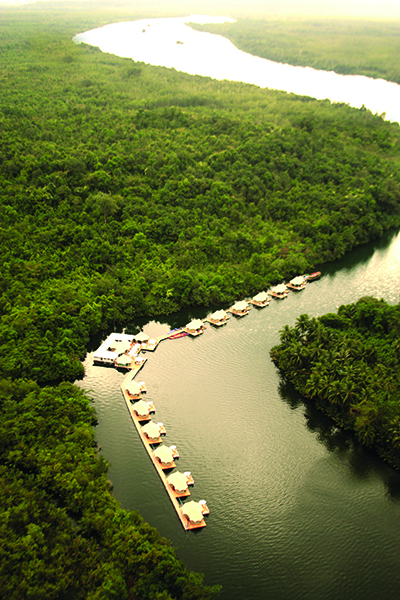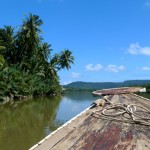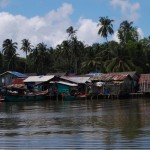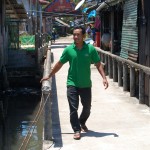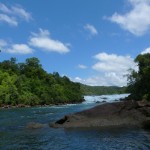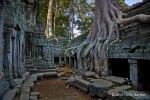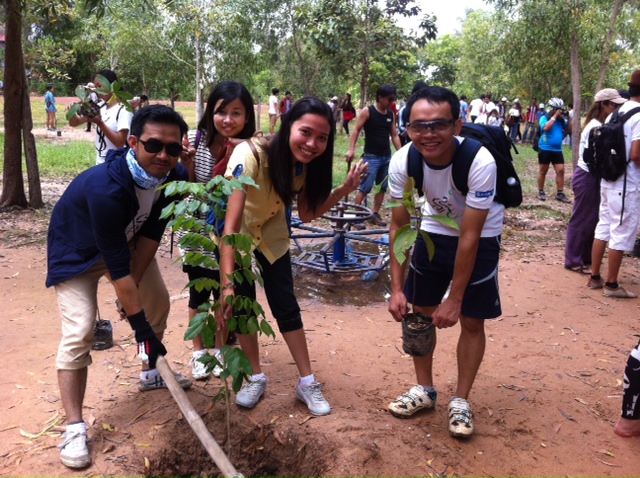Tired of technology and all its distractions taking over your life? Looking for a genuine getaway that will leave you feeling rejuvenated? If you can live without wifi (and shouldn’t we all be able to?), then the 4 Rivers Floating Lodge in Koh Kong is the place for you…
Hidden away at the foot of the stunning Cardamom Mountains, 4 Rivers Floating Lodge is a floating paradise like no other. Located on the banks of the Tatai River, this property is made up of only 12 luxury tents erected on a series of docks — with no road access, boats and winding river are your only means of transport.
Without the distractions of technology, you can really focus your attention on the natural beauty of this exotic locale. The resort runs a number of wonderful excursions which allow you to explore the surrounding area and learn more about life on the river. The community here is clearly still very much in touch with nature, a rare find in Cambodia, with many families continuing the traditions of fishing and farming.
A unique eco-system, the Tatai River is filled with freshwater during the rainy season when the water comes from inland and salt water during the dry season when the sea fills its banks. This partially saline combination makes the river the perfect environment for mangrove forests. Very fertile nesting areas for fish, these trees ensure that the local villages eat well year round. For visitors, where there are mangroves, there is the perfect opportunity to kayak through these unbelievable forests.
One of their most popular trips, and my personal favourite, takes you north, up the winding river into the Cardamoms to the majestic Tatai Falls. Located deep in the heart of some of Cambodia’s most unspoiled rainforest, the area is rich in flora and fauna, devoid of any manmade structures and simply a breathtaking example of nature at its most glorious. Travelling by boat gives you the chance to take in your surroundings as you learn more from you guide about the area’s rich history, on how human activity is changing in the region and more about how unique a place it truly is.
The boat stops just short of the roaring falls, where you then continue by foot along a rocky jungle pathway leading to an open outcrop of rock on the edge of the falls. You couldn’t really pick a more stunning spot for a picnic. Although only 6 metres high, the falls create a dramatic contrast against the bright green backdrop. As you enjoy a dip in one of the numerous pools that have been carved out by the water, you are surrounded by magnificent views looking back down along the river.
As amazing as the excursions are, returning to your floating paradise if one of the highlights of this overall experience. The resort is run by an exceptional team who not only caters to your needs 24/7 but take a genuine interest in your thoughts on the day, questions about the area and any feedback you have. Once back to your temporary home, you can enjoy the last couple of hours of daylight as you read your book on the deck or take one last dip in the river, as the sun sets and the surrounding jungle gets ready for the night. And just when you think your day is winding down, it is time to take in one of nature’s most blissful sights — the magical twinkling of a firefly show.
Getting there
4 Rivers Floating Lodge is about a 4-hour drive from Phnom Penh or Sihanoukville’s coast. The best time to visit is the end of the rainy season, around early November, when the waterfall is full and the green of the jungle is so bright it seems otherworldly. Avoid the hottest months of March-May, and although we were lucky with the weather visiting in September, it is a risk as a number of the excursions are not possible in heavy rain.


